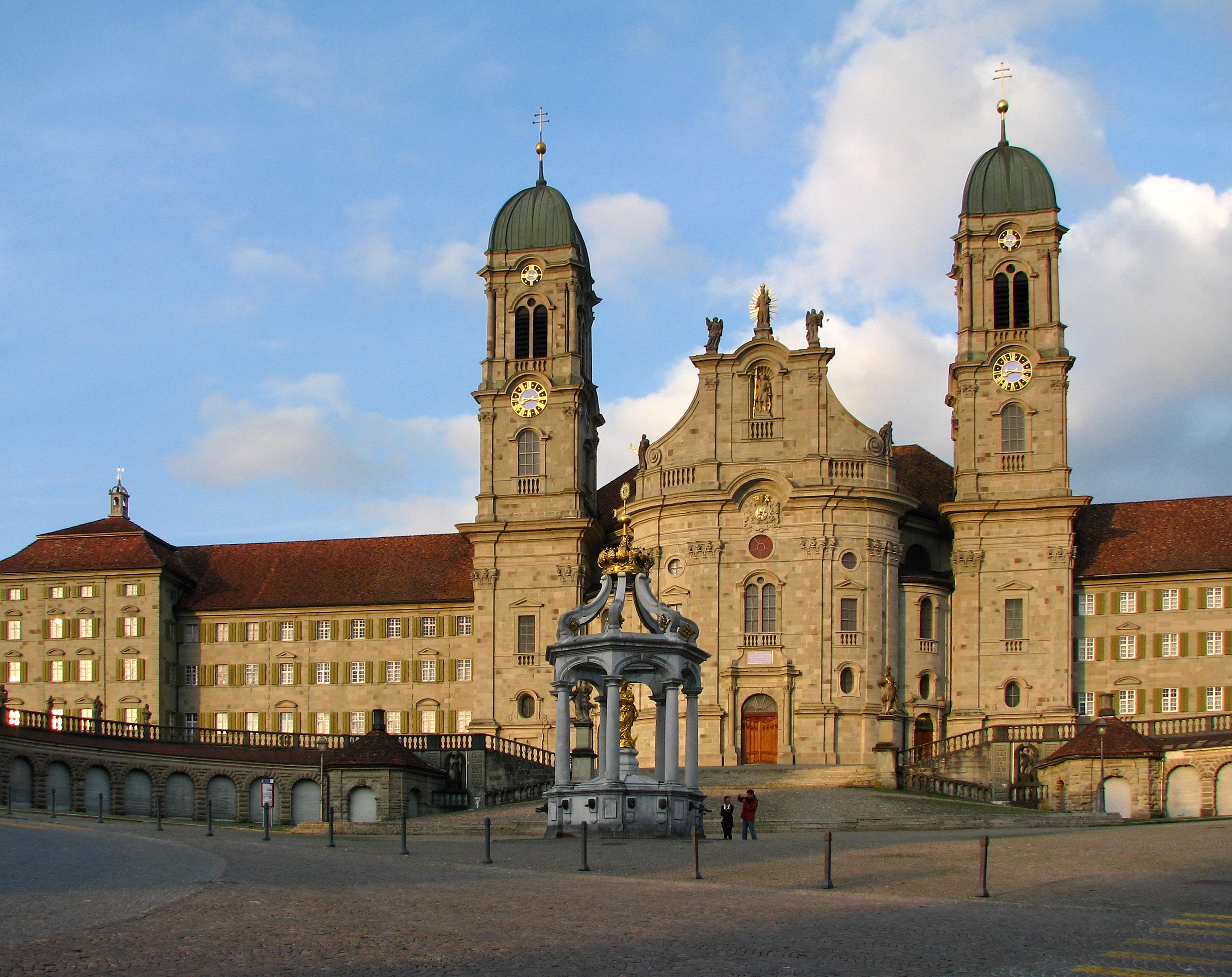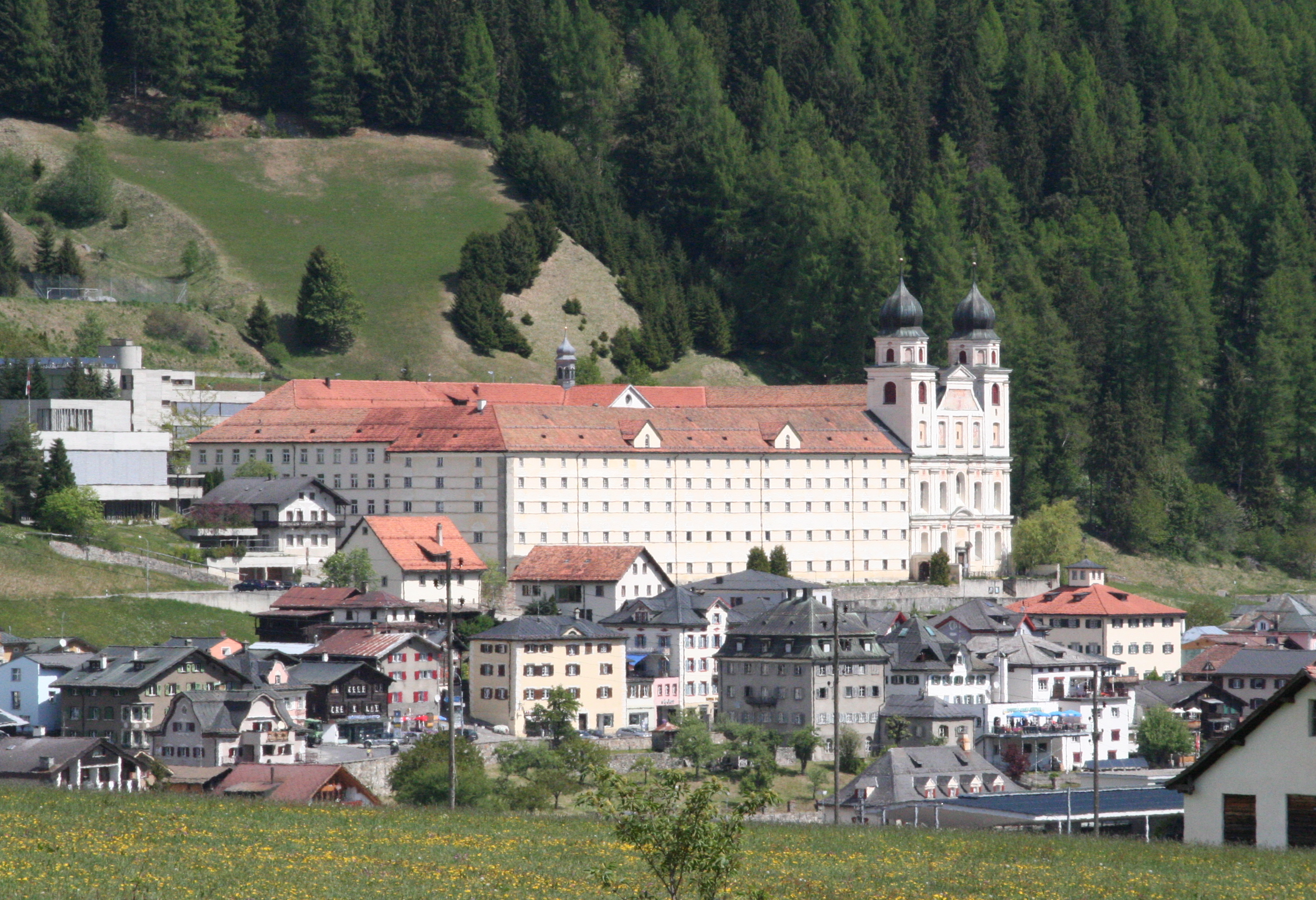Swiss Congregation on:
[Wikipedia]
[Google]
[Amazon]
 The Swiss Congregation of the
The Swiss Congregation of the
 The Congregation was founded, at the urging of the
The Congregation was founded, at the urging of the
/ref> with a significant reform agenda. Of the nine Benedictine monasteries in Switzerland which had survived the *
*
 The fortunes of
The fortunes of  The outlook for Swiss Roman Catholics during the ''"Kulturkampf"'' was so bleak that Einsiedeln and Engelberg began a programme of establishing new religious houses in the
The outlook for Swiss Roman Catholics during the ''"Kulturkampf"'' was so bleak that Einsiedeln and Engelberg began a programme of establishing new religious houses in the

 The member houses of the Swiss Congregation are presently as follows:
*
The member houses of the Swiss Congregation are presently as follows:
*
Swiss Benedictines website
*
* ttp://www.osb.org/swissam/ Swiss-American Benedictine Congregation website {{Authority control Benedictine congregations 1602 establishments in Europe 17th-century establishments in Switzerland Religious organizations established in the 1600s Catholic religious institutes established in the 17th century
Benedictine Confederation
The Benedictine Confederation of the Order of Saint Benedict ( la, Confœderatio Benedictina Ordinis Sancti Benedicti) is the international governing body of the Order of Saint Benedict.
Origin
The Benedictine Confederation is a union of monasti ...
is a grouping of Benedictine
, image = Medalla San Benito.PNG
, caption = Design on the obverse side of the Saint Benedict Medal
, abbreviation = OSB
, formation =
, motto = (English: 'Pray and Work')
, found ...
monasteries in Switzerland or with significant historical Swiss connections.
Foundation
 The Congregation was founded, at the urging of the
The Congregation was founded, at the urging of the Papal legate
300px, A woodcut showing Henry II of England greeting the pope's legate.
A papal legate or apostolic legate (from the ancient Roman title ''legatus'') is a personal representative of the pope to foreign nations, or to some part of the Catholic ...
to Switzerland, in 1602,Benediktinerkloster Mariastein/ref> with a significant reform agenda. Of the nine Benedictine monasteries in Switzerland which had survived the
Reformation
The Reformation (alternatively named the Protestant Reformation or the European Reformation) was a major movement within Western Christianity in 16th-century Europe that posed a religious and political challenge to the Catholic Church and i ...
, seven had joined by 1604. Disentis Abbey
Disentis Abbey (german: Reichskloster Disentis) is a Benedictine monastery in the Canton of Graubünden in eastern Switzerland, around which the present town of Disentis ( rm, Mustér) grew up.
Early history
Formerly the date of the foundation of ...
was prevented at first by considerations of the sensitive politico-religious situation in Graubünden, but joined in 1617. Beinwil Abbey
Beinwil Abbey (Kloster Beinwil) was a Order of St. Benedict, Benedictine monastery in Beinwil, Solothurn, Beinwil in the Canton of Solothurn in Switzerland.
History
It was founded around 1100, probably by the local nobility and was first mention ...
had been dissolved in 1554, but the community was still together, and at last, after it had been decided that a re-foundation would take place at Mariastein, joined in 1647.
The membership of the Congregation as at 1647 was thus all the extant Benedictine monasteries still in Switzerland:
Einsiedeln Abbey
Einsiedeln Abbey (german: Kloster Einsiedeln) is a Benedictine Catholic monastery in the village of Einsiedeln in the canton of Schwyz, Switzerland. The abbey is dedicated to Our Lady of the Hermits, in recognition of Meinrad of Einsiedeln, a ...
(May 1602)
* Fischingen Abbey (May 1602)
*Muri Abbey
Muri Abbey (german: Kloster Muri) is a Benedictine monastery dedicated to Saint Martin of Tours. It flourished for over eight centuries at Muri, in the Canton of Aargau, near Zürich, Switzerland. It is currently established as Muri-Gries in S ...
(May 1602)
* St. Gall Abbey (May 1602)
* Pfäfers Abbey (Nov 1602)
* Rheinau Abbey (1603)
*Engelberg Abbey
Engelberg Abbey (german: Kloster Engelberg) is a Benedictine monastery in Engelberg, Canton of Obwalden, Switzerland. It was formerly in the Diocese of Constance, but is now in the Diocese of Chur. It is dedicated to Our Lady of the Angel ...
(1604)
*Disentis Abbey
Disentis Abbey (german: Reichskloster Disentis) is a Benedictine monastery in the Canton of Graubünden in eastern Switzerland, around which the present town of Disentis ( rm, Mustér) grew up.
Early history
Formerly the date of the foundation of ...
(1617)
* Mariastein Abbey (1647)
Changes
Roman Catholic
Roman or Romans most often refers to:
*Rome, the capital city of Italy
*Ancient Rome, Roman civilization from 8th century BC to 5th century AD
*Roman people, the people of ancient Rome
*''Epistle to the Romans'', shortened to ''Romans'', a letter ...
establishments in Switzerland were turbulent, especially in the 19th century. All were dissolved as a consequence of the French Revolution
The French Revolution ( ) was a period of radical political and societal change in France that began with the Estates General of 1789 and ended with the formation of the French Consulate in November 1799. Many of its ideas are conside ...
in 1798, but were restored by Napoleonic decree in 1803, with the exception of St. Gall, where the Prince-Abbot refused to make the necessary political concessions. The politics of the Swiss cantons brought about the dissolution of Pfäfers (1838), Muri (1841), Fischingen (1848) and Rheinau (1863), of which Muri was re-founded in 1845 at Gries in what is now the Italian province of South Tyrol
it, Provincia Autonoma di Bolzano – Alto Adige lld, Provinzia Autonoma de Balsan/Bulsan – Südtirol
, settlement_type = Autonomous province
, image_skyline =
, image_alt ...
and Fischingen not until 1977, as an independent priory.
The ''"Kulturkampf
(, 'culture struggle') was the conflict that took place from 1872 to 1878 between the Catholic Church led by Pope Pius IX and the government of Prussia led by Otto von Bismarck. The main issues were clerical control of education and ecclesiasti ...
"'' caused the dissolution of Mariastein in 1874/75. The exiled community sought refuge first in France, and, exiled again in 1901, in Austria
Austria, , bar, Östareich officially the Republic of Austria, is a country in the southern part of Central Europe, lying in the Eastern Alps. It is a federation of nine states, one of which is the capital, Vienna, the most populous ...
, where they settled at Bregenz
Bregenz (; gsw, label= Vorarlbergian, Breagaz ) is the capital of Vorarlberg, the westernmost state of Austria. The city lies on the east and southeast shores of Lake Constance, the third-largest freshwater lake in Central Europe, between Swit ...
, only to be deported yet again in 1941, by the Gestapo
The (), abbreviated Gestapo (; ), was the official secret police of Nazi Germany and in German-occupied Europe.
The force was created by Hermann Göring in 1933 by combining the various political police agencies of Prussia into one or ...
. The Swiss government then allowed them as political refugees to re-occupy their old monastery, which was however not re-established as such until 1973.
United States of America
The United States of America (U.S.A. or USA), commonly known as the United States (U.S. or US) or America, is a country primarily located in North America. It consists of 50 states, a federal district, five major unincorporated territor ...
so that the remaining monasteries and nunneries in Switzerland would have a refuge if they were all exiled. Eventually the crisis passed, but the new foundations took on a life of their own as the Swiss-American Congregation of the Benedictine Confederation.
Political changes outside Switzerland brought the addition of Marienberg Abbey in South Tyrol, which transferred from the Austrian Congregation in 1931.
Present membership

 The member houses of the Swiss Congregation are presently as follows:
*
The member houses of the Swiss Congregation are presently as follows:
*Einsiedeln Abbey
Einsiedeln Abbey (german: Kloster Einsiedeln) is a Benedictine Catholic monastery in the village of Einsiedeln in the canton of Schwyz, Switzerland. The abbey is dedicated to Our Lady of the Hermits, in recognition of Meinrad of Einsiedeln, a ...
*Fischingen Priory
Fischingen Abbey (Kloster Fischingen), now Fischingen Priory, is a Benedictine monastery situated in Fischingen in the Canton of Thurgau, Switzerland, on the upper reaches of the Murg, a tributary of the Thur. It was founded in 1138, dissolved in ...
(re-founded in 1977)
*Engelberg Abbey
Engelberg Abbey (german: Kloster Engelberg) is a Benedictine monastery in Engelberg, Canton of Obwalden, Switzerland. It was formerly in the Diocese of Constance, but is now in the Diocese of Chur. It is dedicated to Our Lady of the Angel ...
*Disentis Abbey
Disentis Abbey (german: Reichskloster Disentis) is a Benedictine monastery in the Canton of Graubünden in eastern Switzerland, around which the present town of Disentis ( rm, Mustér) grew up.
Early history
Formerly the date of the foundation of ...
* Marienberg Abbey (since 1931; in South Tyrol)
* Mariastein Abbey (re-founded in 1970/71)
*Muri-Gries Abbey
Muri-Gries Abbey (german: Benediktinerabtei Muri-Gries, it, Abbazia dei Benedettini di Muri-Gries) is located in Bolzano, South Tyrol, Italy and was founded in 1844 as an offshoot of the former Muri Abbey in Aargau. It is a member of the Swiss C ...
(since 1845 in South Tyrol; head of the congregation)
References
External links
*Swiss Benedictines website
*
* ttp://www.osb.org/swissam/ Swiss-American Benedictine Congregation website {{Authority control Benedictine congregations 1602 establishments in Europe 17th-century establishments in Switzerland Religious organizations established in the 1600s Catholic religious institutes established in the 17th century